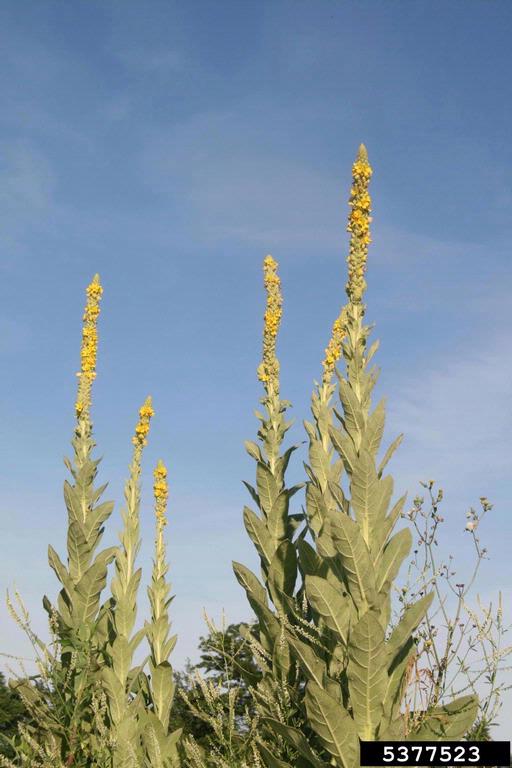Weed of the Month: Common Mullein Bugwood
 | Author:
Allison Kosto, MSU Broadwater County Extension Agent
MSU Broadwater County Extension Agent |
Weed of the Month: Common Mullein Bugwood Allison Kosto, MSU Broadwater County Extension Agent A large and unique plant, common mullein has an interesting history that dates back to colonial times. The plant is listed as a noxious weed in Colorado, Hawaii and several Montana counties.
Description & Habitat Native to Europe, northern Africa and Asia, common mullein was introduced to America by early settlers. The settlers discovered that if the seeds were toxic to fish, so they crushed them and put them in water to poison and collect large quantities of fish. It was also used as a medical plant to treat burns and rashes. By the late 1800s it had made its way across North America. It is common in burned areas, roadsides, fields, pastures, forest and disturbed areas. It is often found in dry, sandy or gravelly soils, and is often one of the first plants to colonize disturbed areas.
Common mullein is a biennial (lifecycle of two years). The first year it forms a rosette up to 2 feet in diameter with large furry leaves. Leaves are light green and covered with many soft hairs. The second year, the plant grows a single stem, 2 to 6 feet tall. The plant stems are woody and can persist as skeletons throughout the winter. Flowers are yellow in color and clustered around the top section of the stem. Common mullein has a deep taproot and only reproduces by seed. One plant can produce between 136,000 to 175,000 seeds. The seeds are unique because they require light to germinate. This is why the plant often thrives in bare soil after disturbances. The seeds are less likely to travel long distances and do not compete well with dense vegetation.
Because common mullein grows quickly in disturbed soils, it can delay establishment of native plants and grasses by forming dense colonies. It may disappear or diminish over time once desired plants become more competitive. However, it can be a perpetual issue in areas that are overgrazed or frequently disturbed.
Management Avoiding disturbance or overgrazing is also often effective to prevent establishment of common mullein. Once its established, the key to managing it is to prevent it from going to seed. This can be done with hand pulling, digging or hoeing before seed production. Make sure to cut or remove the crown. Mowing is not effective because plants can regrow.
Herbicides can be used but are also challenging due to the wooly leaves. It’s important to use a surfactant with the herbicide to improve absorption. Commonly used herbicides include 2,4-D, Cimmaron, Grazon (restricted use), Escort, Milestone, Telar and Tordon (restricted use). Always read and follow the entire label when applying herbicide. Common chemical names are used for clarity but does not imply endorsement of a product or brand.
For assistance on weed identification and management, contact the MSU Extension Office in Broadwater County at 406-266-9242.
Article Images
Click on Image Thumbnail(s) to view fullsize image
PhotoCredit: Allison Kosto
